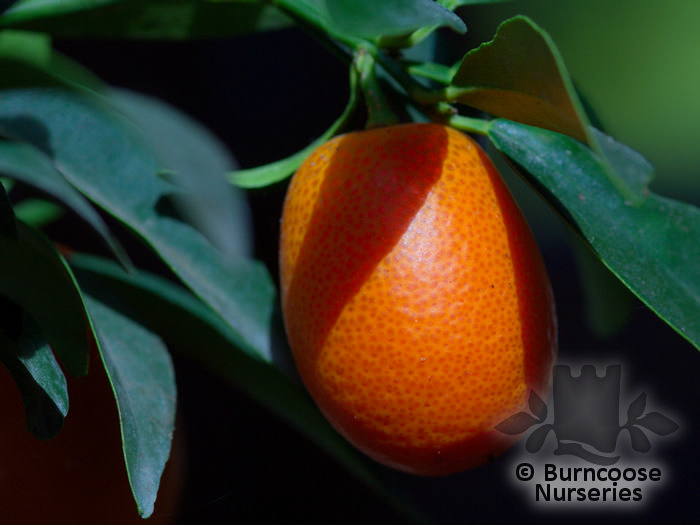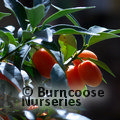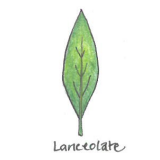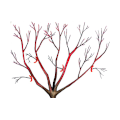Plants by mail order since 1984, over 4100 plants online today
Nursery & Gardens open: Mon - Sat 8:30 - 17:00 & Sun 10:00 - 16:00
Pop up café: open weather dependent
- Shop Now
- Burncoose Specialities
- This Month
- Offers & Promotions
- RHS Chelsea Flower Show 2024
- 40 years at Burncoose
- Engage With Us
- Information, Help & Advice
- About Us & Our Services
- Terms & Conditions
- Log In / Register

CITRUS Kumquat
(C.japonica) orange edible fruits with sweet skin and acidic flesh.
Further Reading....
-
Evergreenmid- to light green, glossy leaves to 10cm (4in) long with distinctive vein patterns
-
 White
White -
 Height2.5-3.6m (8-12ft)
Height2.5-3.6m (8-12ft) -
 Spread1.5-2.5m (5-8ft)
Spread1.5-2.5m (5-8ft) -
FruitPlants which produce an edible or ornamental fruitProduces round to oval orange-yellow fruit 2.5cm (1in) in diameter with mildly acidic pulp and sweet, edible skin
-
Tall ShrubOr small tree, usually many-branched with spines in the leaf axils. Produces axillary clusters of flowers
-
 Heated greenhouse - warm temperateCan be grown outside in summer. Plant can withstand temperatures down to 5°C (41°F)
Heated greenhouse - warm temperateCan be grown outside in summer. Plant can withstand temperatures down to 5°C (41°F) -
 Full sun
Full sun
CITRUS Kumquat
-
Additional Features
 Good to knowCitrus japonica. Syn Fortunella japonica. The most diminutive of the citrus family
Good to knowCitrus japonica. Syn Fortunella japonica. The most diminutive of the citrus family Pests & DiseasesRed spider mites, whiteflies, scale insects, mealybugs
Pests & DiseasesRed spider mites, whiteflies, scale insects, mealybugs Place of originsouthern China
Place of originsouthern China -
Flower ShapeCup-shapedShallowly cup-shaped 1cm (½in) across
-
HardinessTender (greenhouse & conservatory)
-
Leaf margin
 Entire
Entire(see photos above) -
Leaf shape
 Lanceolate
Lanceolate(see photos above) -
Pruning group
 Pruning group 1Suitable for: Deciduous and evergreen trees, and some deciduous shrubs.
Pruning group 1Suitable for: Deciduous and evergreen trees, and some deciduous shrubs.
Pruning: Minimal pruning required. Prune wayward or crossing branches to maintain a healthy framework.
When: When dormant in the late winter/early spring. Some in the summer/autumn to prevent bleeding of sap.
-
Scented PlantsScented flowersScented foliage
-
Seasonal InterestAutumnSpringSummerWinter
-
Soil ConditionsFertile moist well-drained soilModerately fertileNeutral to acid soil
-
WildlifeRabbit Resistant
Jan
Feb
Mar
Apr
May
Jun
Jul
Aug
Sep
Oct
Nov
Dec
Citrus Trees - Care Guide
Useful extras...

Fertilisers & Feeds - Chempak
Citrus Feed
A high nitrogen formula to boost growth in both summer and winter.
Considerably cheaper than on Amazon!
2 options from £5.00

Vermin & Pest Control
Fly Paper
Pack of 4 fly papers. Traditional and non-toxic, easy to use and disposable. Can catch up to 100 flies!
Only £2.00

Vermin & Pest Control
Fly Window Stickers
Perfect and attractive way to catch flies.
Sunflower design. 4 stickers in each pack.
Only £4.80

Vermin & Pest Control
SB Plant Invigorator
This is a non-biological non-chemical plant insecticide and mildewcide.
Works against the physical motion of the insect. Perfect for all plants and edible crops.
Only £9.00
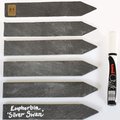
Garden Goodies
Slate Plant Labels
These wonderfully tactile natural slate plant labels are hand made in Cornwall and come with a chalk pen.
Just stick them in your pot or border. Pack of 6.
Only £10.00

Garden Goodies
Slate Tie-on Plant Labels
Hand made in Cornwall, these delightful natural slate labels are perfect for pots.
Comes with chalk pen. Pack of 5
Only £10.00


